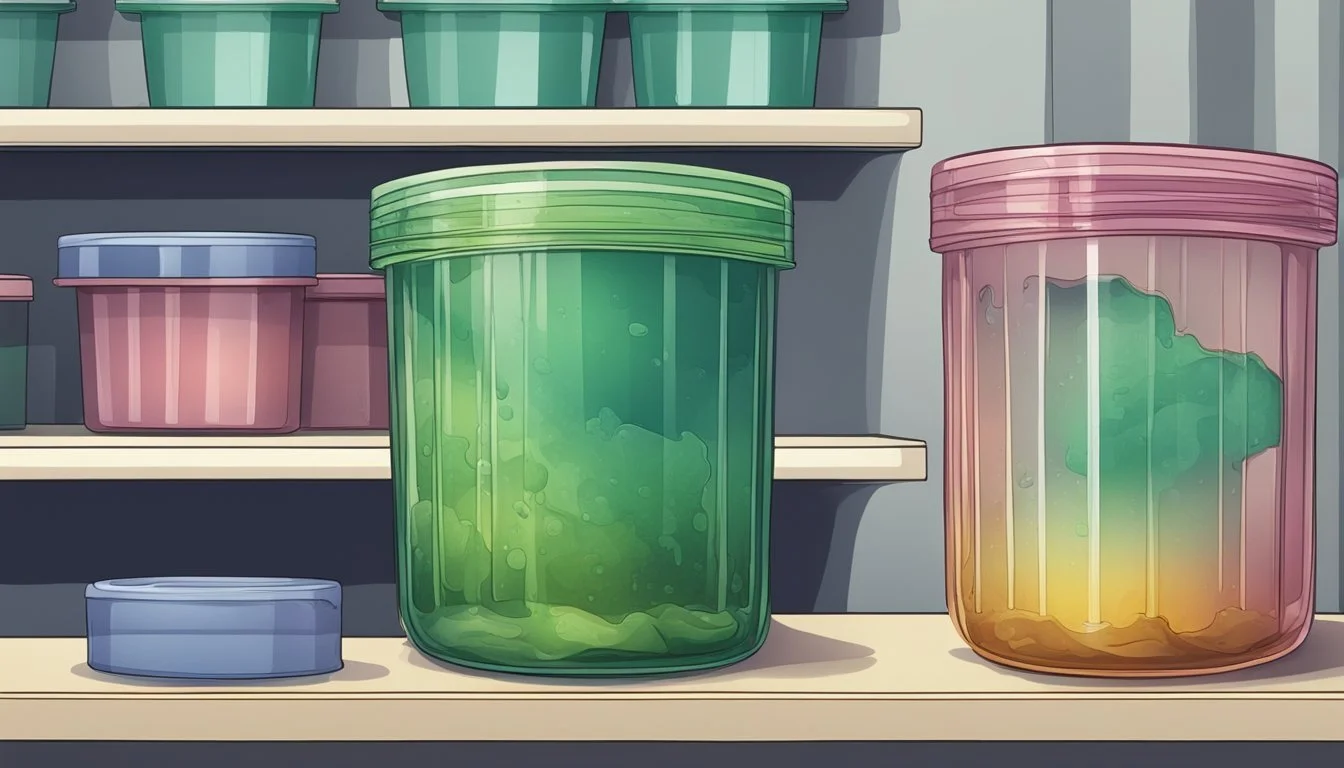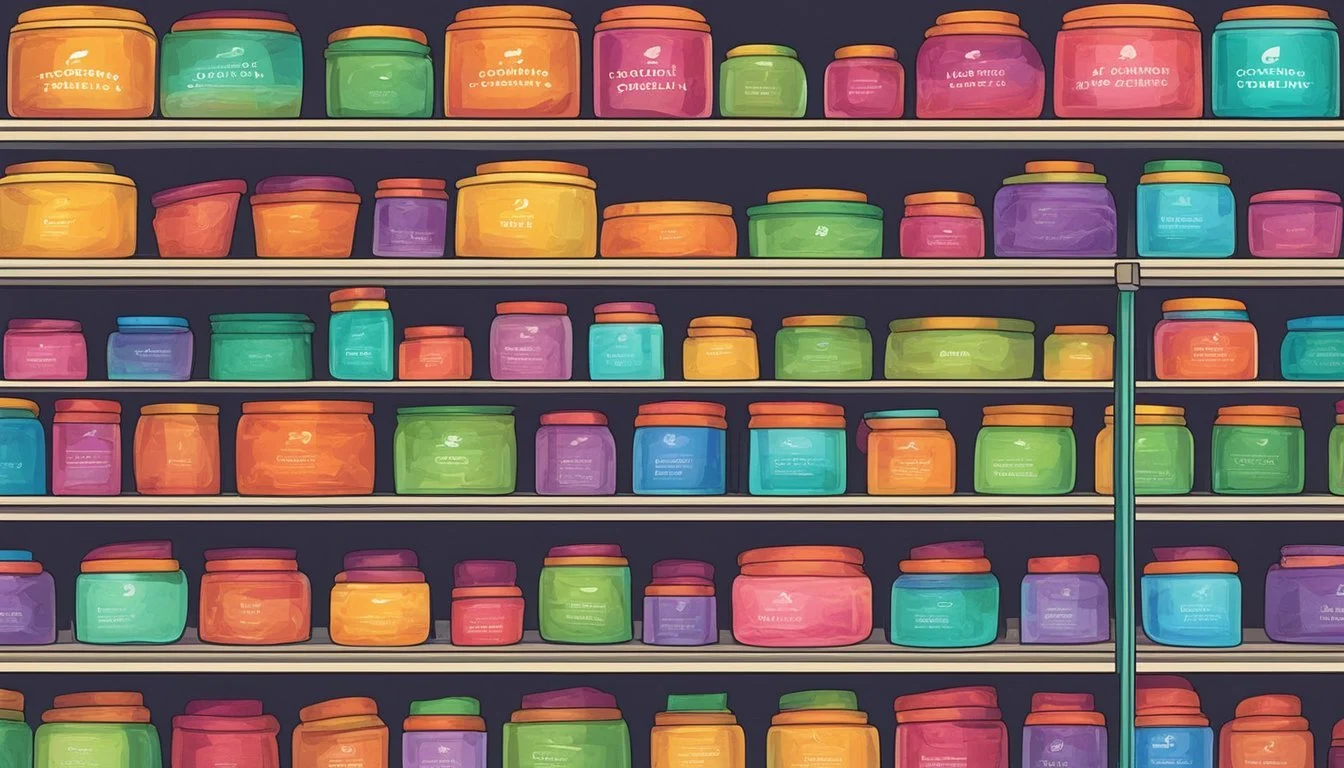Does Jello Go Bad?
Understanding Shelf Life and Spoilage Signs
Jello, a popular gelatin-based dessert, has a long shelf life compared to many other sweet treats. This attribute often leads to the common question of whether Jello eventually goes bad. Indeed, like most food products, Jello can expire and its quality can deteriorate, although it might not spoil in the same way as fresh produce or dairy.
Jello comes in several forms, including powder mix and ready-to-eat preparations. Unopened powdered Jello mix, if stored properly, can last almost indefinitely at room temperature. However, once opened, the mix should be used within approximately three months to ensure optimal freshness and flavor. The prepared form of Jello, when refrigerated, is generally best consumed within 7 to 10 days, after which its taste and texture may begin to decline.
It is important to note the presence of an expiration date or best before date on Jello packaging, which indicates the last day the manufacturer vouches for the product's peak quality. Adherence to good storage conditions extends the shelf life of Jello. For ready-to-eat Jello, whether homemade or pre-packaged, it’s advisable to consume it within a week of opening to enjoy its intended taste and consistency.
Understanding Jello
Jello is a popular dessert known for its gelatinous texture and variety of flavors. This section provides an overview of its main components and the different types available.
Components of Jello
Jello primarily consists of gelatin, which is a protein derived from collagen obtained from various animal body parts. It acts as a gelling agent that gives Jello its unique texture. Other essential ingredients include:
Sugar or artificial sweeteners for taste
Flavorings and colorings, which depend on the particular variety of Jello
Water is used both in the making of Jello powder and when preparing it at home
Types of Jello
There are several forms of Jello available:
Jello Powder: This is the dry mix which one combines with boiling water and then cools to set. It has a long shelf-life and comes in a variety of flavors.
Prepared Jello: Often sold in individual jello cups, this type is ready-to-eat and needs refrigeration. It is convenient for quick snacks or inclusion in packed lunches.
Homemade Jello: Made by dissolving jello powder in hot water and sometimes adding fruit or other ingredients before allowing it to set.
Jello Pudding Pops: A frozen treat made from specially formulated jello pudding mixtures.
Each type comes with its specific storage instructions and shelf life, influencing its longevity and freshness.
Shelf Life and Expiration
Understanding the shelf life of Jello is essential for maintaining its freshness and quality. Jello's shelf life varies depending on its state—whether it's prepared, still in powder form, or has added ingredients.
Expiration Date Labels
Manufacturers provide expiration date labels such as best before or use-by dates on packaging to indicate the timeframe for which the product is expected to retain its optimal quality. It's important to distinguish that a best before date refers to the guaranteed freshness of Jello, while a use-by date is more closely related to food safety considerations.
Best Before Date: Typically found on Jello boxes, indicating when the product will be at its peak quality.
Use-By Date: Less common for Jello but can apply to pre-made or specialty versions.
Determining Jello Shelf Life
Jello's shelf life largely depends on its storage conditions. An unopened package of Jello powder can last for months beyond its "best by" date if kept in a cool, dry place. Once the Jello has been prepared and refrigerated, it is recommended to consume it within 7 to 10 days to enjoy its ideal taste and texture.
Unopened Pack of Jello (Powder Form):
Cool, dry place: Several months past best before date.
Prepared Jello:
Refrigerated (covered container): 7-10 days for optimal freshness.
In both cases, if Jello has been exposed to adverse conditions like high temperatures or left unrefrigerated for a prolonged time, its longevity can be compromised earlier than the stated shelf life. Always check for any signs of spoilage before consumption.
Signs of Spoilage
When assessing whether Jello has gone bad, it is important to examine specific indicators of spoilage that are readily observable through visual inspection, tactile evaluation, and smell.
Visual Cues
Spoiled Jello often exhibits discoloration or bacterial marks. If one notices any unusual colors or spots on the Jello that were not there when it was first prepared, this could be a sign of mold growth. Mold can appear in a variety of colors, including green, black, or white. Another visual sign to look for is the presence of a watery liquid on the surface, which may signal that the Jello is breaking down and should not be consumed.
Texture and Consistency
A noticeable change in texture can indicate spoilage. Jello should have a consistent, gel-like texture. If it appears clumpy or if the texture has become overly soft or liquefied beyond the expected wobble of set Jello, this could be a sign that it has gone bad. It's important to be wary of any significant deviations in Jello's consistency, as they can be a direct result of bacterial or mold growth.
Odor Detection
Jello that is fresh and safe to consume should have a mildly sweet odor or no odor at all. If there is a noticeable bad odor or strong sour or unpleasant odors emanating from the Jello, it's a clear indicator that spoilage has occurred. One should not ignore a bad smell, as it is a key sign that the Jello is no longer suitable for consumption.
Effects of Improper Storage
Improper storage methods can significantly affect the shelf life and safety of Jello. Factors such as temperature fluctuations, excess moisture, humidity, and light exposure are critical in determining how well Jello maintains its quality over time.
Temperature Fluctuations
Jello should be stored at a consistent, cool temperature to prevent degradation. Fluctuations in heat can cause the jellying agents to break down, resulting in a watery consistency. If Jello is exposed to high temperatures, bacterial growth may ensue. Conversely, temperatures that are too cold may cause Jello to freeze, altering its texture upon thawing.
Recommended Storage Temperature: 35-40°F (1.6-4.4°C)
Heat: Avoid temperatures above 50°F (10°C)
Cool: Maintain temperatures slightly above freezing point
Moisture and Humidity
Exposure to moisture and humidity can spur bacterial growth or mold contamination in Jello. Jello should be stored in an airtight container to prevent moisture from entering and to uphold food safety standards.
Prevent Moisture Ingress: Use airtight storage containers
Humidity Levels: Keep them low inside storage areas
Contamination: Moist environments can lead to cross-contamination
Light Exposure
Jello's quality can be compromised when exposed to light, particularly direct sunlight. Light can catalyze chemical reactions, altering Jello's flavor and color.
Avoid Direct Sunlight: Store Jello in dark areas or opaque containers
Limit Light Exposure: Non-transparent containers can minimize light penetration
Storage Area: Preferably place in a cupboard or pantry away from light sources
Optimal Storage Methods
Proper storage of Jello is imperative to maintain its quality and extend its shelf life. By following specific storage techniques, such as temperature regulation and the use of airtight containers, one can ensure that their Jello remains fresh and safe for consumption.
Refrigeration Best Practices
When storing Jello in the refrigerator, it is crucial to keep it at a consistent temperature. Typically, the fridge should be set below 40°F (4°C) to inhibit bacterial growth. Plastic wrap can shield Jello from other odors and contaminants in the refrigerator. After serving, it is important to cover the Jello with plastic wrap and return it to the refrigerator promptly. Always use clean utensils when serving to prevent introducing microbes that could spoil the Jello.
Freezing Jello
Freezing Jello can alter its consistency and is not generally recommended. However, if one chooses to freeze Jello, it should be placed in the freezer at 0°F (-18°C) or below to ensure it remains edible. Freeze Jello in an airtight container to prevent freezer burn. To consume after freezing, thaw the Jello slowly in the refrigerator to help maintain its quality.
Airtight Containers
Storing Jello in airtight or sealed containers is essential for maintaining its quality. Whether it is homemade or prepackaged, placing Jello in containers with tight-fitting lids can prevent the absorption of moisture or odors. For powdered Jello mix, the same principle applies; the powder should be kept in a sealed container to prevent moisture from causing it to clump or spoil.
Using Expired Jello
When jello surpasses its expiration date, one must consider both the safety implications and the potential impact on the food's flavor and quality before deciding to use it.
Safety and Health Considerations
Expired jello can pose safety concerns, though it often remains safe to consume for a period after the printed date, assuming proper storage. To minimize risks like food poisoning, users should closely inspect the jello for:
Signs of mold or unusual odors
Abnormal textural changes, such as excessive liquidity or a rubbery feel
Discoloration that deviates from the expected appearance
If these symptoms are present, it is prudent to discard the jello to avoid health risks.
Personal Preferences and Food Quality
Regarding personal preference, the taste and quality of expired jello may decline, but some people find it acceptable for consumption within a limited time frame. Assessing personal tolerance for diminished:
Flavor: The intensity may fade over time.
Appearance: There may be some color fading.
can guide the decision on whether to use the jello. It's a balance between reducing food waste and ensuring a pleasurable eating experience.
Frequently Asked Questions
Does Jello Expire? Yes, Jello does expire. Unopened packs of dry Jello can last indefinitely when stored in a dry place at room temperature. However, once opened, Jello should be used within three months.
How Long Can You Keep Jello After Preparing It? Prepared gelatin-based desserts should be consumed within a week. Leftover Jello can become a breeding ground for bacteria over time.
What Are Signs That Jello Has Gone Bad? Spoiled Jello may have changes in smell, color, or texture. Trust your senses; an off odor, dull color, or strange consistency are indicators that it should not be consumed.
Is It Safe to Consume Expired Dry Jello? Expired dry jello is generally safe to consume if it has been stored properly. Nevertheless, the flavor and texture might not be ideal.
Can You Store Jello at Room Temperature? Dry Jello in powdered form can be stored at room temperature. Once prepared, it needs refrigeration to maintain its jiggly consistency and prevent spoilage.
What Is Jello Made Of? Jello is a fruity, protein-rich dessert made from animal collagen, which gives it its characteristic texture.






